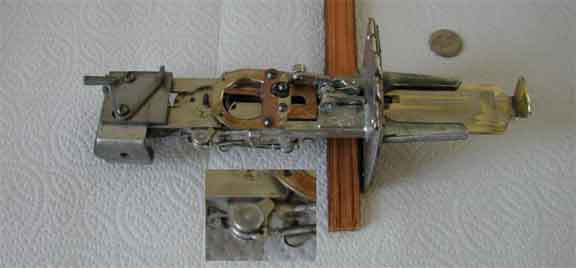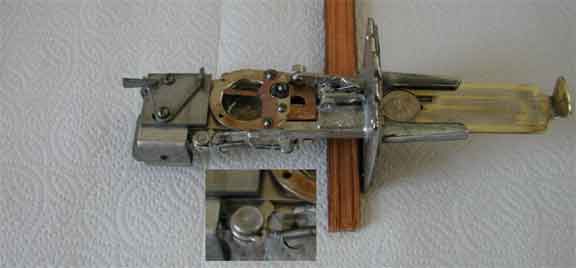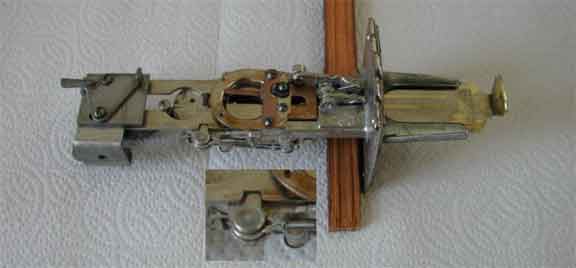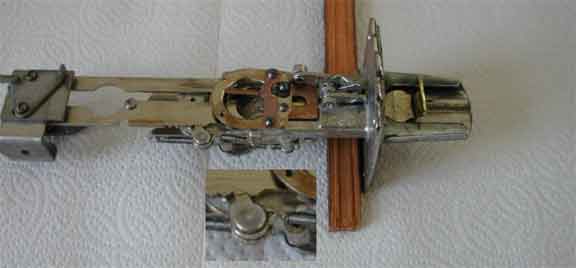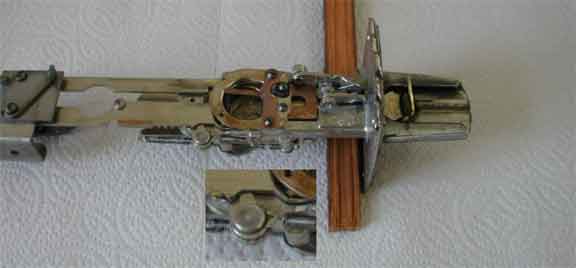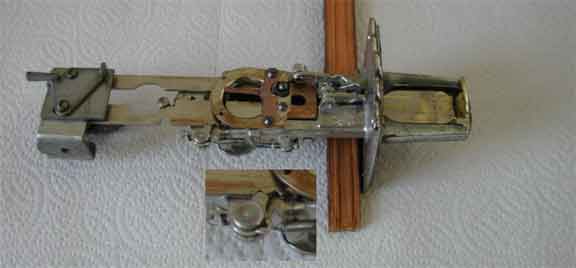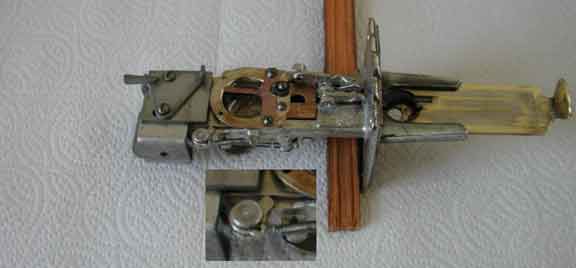Coin Slide or Coin Acceptor
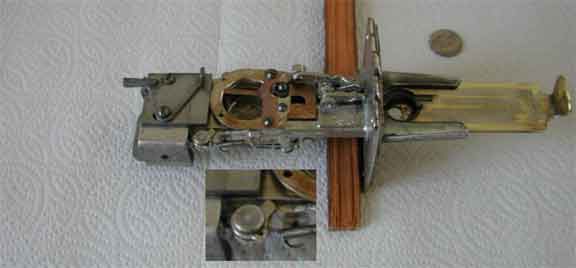
(mouse over the buttons to see the steps or "PLAY" to see the animation)
Objectives
The objectives for a coin slide are:
- accept a coin
- reset and start a new game, the full stroke of the slide must accomplish everything needed
- reject coins that are the wrong size or thickness
- allow the last coin played to be viewed, allowing the operator to check before paying out
- prevent the player from jiggling the slide in and out, once partially pushed, in order to gain free games
Ratchet
The ratchet is an "L" shaped finger that pivots. It has a spring attached to the base of the "L" that attempts to keep the top of the "L" pointing at the edge of the coin slide. A larger image of it is included in the view above.
The ratchet is the primary mechanism that forces the slide to complete a full stroke, once the coin is accepted. It slides along the left edge of the slide and can grip teeth cut into the side of the slide, turn around in open areas cut into the slide and slide along smooth areas. The spring tensions the ratchet against the edge of the coin slide or allows it to point at the slide when there are gaps in the edge.
Coin Slide and Rejector Together
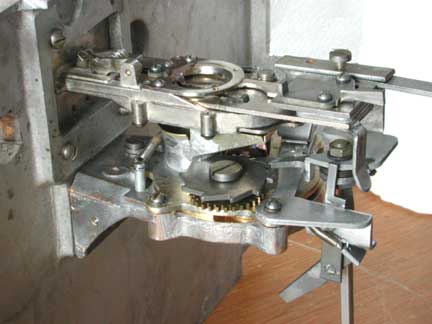
This shows the rejector below the coin slide. Note the finger on the coin slide that rakes across the star ratchet of the rejecter. There is also a funnel that catches the previously played coin as it drops from the slide.

